
Let’s start with what SPF is. It stands for Sun Protection Factor, and is determined by an FDA approved lab procedure based on a minimum of testing on ten subjects, meaning ten actual people. (Yes, SPF testing is done on human subjects! Not animal testing, HUMAN testing. Yes, it is required to be done this way to be assigned an SPF value). This test can only be done by an certified lab, and can cost anywhere from $2500 to upwards of $10,000 or more, depending on if you’re testing for additional protective measures, such as waterproof, UVA in addition to UVB, etc.
The most basic test that will provide an actual SPF number result (such as SPF 15, SPF 40, etc.) requires the testing on at least ten subjects with consistent results as they are exposed to UV light for certain periods of time. Once that test is completed, an SPF determination is issued on the specific formula in question, and only then can a manufacturer place that all important SPF value label on their product. This is not to say that all products you see at the store with an SPF value have actually gone through this testing. By FDA regulations they are supposed to, but we’ve found there are many dishonest manufacturers out there who either make claims without any testing, or who make SPF claims greater than what the product actually provides. There’s also those manufacturers that have products that have been grandfathered in, and those are the ones that make SPF claims up to a 100.
With that comment aside, I want to quickly clear up some misunderstandings that I often see with small businesses who make personal care products. There is a lot of scientific research behind certain ingredients that have already been shown to provide some level of SPF protection. But an ingredient with SPF 10 combined with an ingredient with SPF 5, will likely not yield a final results of SPF 15. It just doesn’t work that way. First, you’re going to have a chemical reaction between different ingredients which could result in counteracting some of the sun protective measures. Or it could be that the two of the ingredients could offer sun protective measures via the same pathway, which means combining the two makes no difference because it would be the same as using one. There are many potential reasons why SPF results will not be what you expect or think they should be. However it is beyond the scope of this article to describe all of them here.
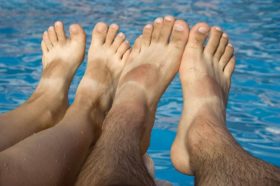
So the only way to know the actual SPF number is to dish out the cash, send the sunscreen to the lab, and get official results. This is relatively expensive as noted earlier, and it’s why we don’t have an SPF on any of our products except for our Shield Sunscreen, because as a small business owner, testing multiple products is cost prohibitive.
But what does SPF really mean? Do higher SPF values really offer better protection? Is SPF 40 really better at protecting from the sun then SPF 25? Are there really products out there that protect you from the sun 100%? The answers to these questions are unfortunately not a simple yes or no. Unfortunately the topic is so complex, and even convoluted if you try to understand the FDA website, that I won’t be able to cover it all, but I’ll do my best to cover the basics. If you’re looking to find out if you really need a sunscreen, (and what makes a good sunscreen), you can read our article about that here.
What does that SPF really mean?
Per the FDA, the Sun Protection Factor is determined when a product is tested in a laboratory, where a total of ten (or more) people must have a specified amount of the product applied to their skin, over a measured area, then exposed to UV light for a specified amount of time. The FDA testing methodology requires that the manufacturer have an approximate idea of what a product’s SPF value will be so the certifying lab can begin testing appropriately, as the tests are conducted by exposing the covered area for a determined amount of time to UV light. For ethical reasons the testing cannot be conducted simply by exposing subjects for the maximum test duration to see what the results are, plus if that test fails, the test must now be repeated for a shorter exposure time, thus having an expected SPF value is critical.
Once the testing is completed, the lab has to assemble and evaluate the data and make sure that all the final results are within the FDA’s requirements. If so, this is when the number is finally assigned to the tested product. This is also done in comparison to an approved control. In the case of our product being tested, the control used was 7% padimate and 3% oxybenzone standard. That means that alongside of having our sunscreen tested, was a patch of the padimate/oxybenzone mix as a standard control to make sure that the test was being administered correctly, the UV lights are working correctly, etc.
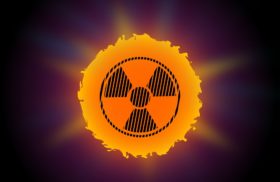
This process is actually a lot more complex than I make it sound. When doing these laboratory experiments, a lot has to be taken into consideration, such as skin type, age, light source, light manufacturer, whether or not the light was warmed up for 15 minutes, etc. Fortunately most testing labs have it literally down to a science, and all you have to do is pay for it.
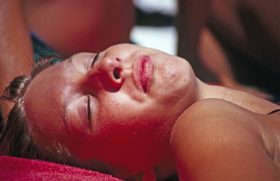
Once the testing is complete, a report is published offering all the required information, and that final SPF number is permitted to be listed on the packaging. So what does that number mean? It means that no sunburn redness was observed on a minimum of ten test subjects as a result of the specified testing. The specific steps in that testing process are as follows: 1. Apply the sunscreen in the FDA specified quantity over an FDA specified size skin test site. 2. Expose the skin test site to a UV light of a FDA mandated standard intensity intended to mimic sunlight (with a standard distance between the light source and subject), for pre-determined amounts of time at different skin sites. Typically five different test sites are used, with each site having a different duration of exposure to the UV light. 3. During the testing of steps 1 and 2 follow the same procedure at other test sites using a control sunscreen with a known SPF value, but with the same varying durations of exposure as the tested product.
Is a higher SPF mean more protection?
There are several web sites that have articles on SPF that claim that higher SPF ratings do provide a greater percentage of protection. For example, I’ve seen data listed such as 93%-96% protection from SPF 15 versus 97% protection from SPF 30, versus 98% protection from SPF 50, and 100% protection from SPF 100. (Note that the FDA does not even allow SPF ratings above 50 any more. If you see a SPF of 100 it was “grandfathered in” from before they changed this regulation.) Even if these differences in percentage of protection are true, the difference in protection between an SPF 15 product and an SPF 50 product is not that significant.
However I am skeptical of the differences in percentage of protection based on SPF value. Despite the fact that the FDA itself tries to imply that SPF ratings mean both duration of protection and percentage of protection, in the real world this appears to NOT be the case. I have never actually found any labs that make claims about testing percentage of UV protection from various SPF values because the percentage of UV protection is not actually measured. In fact, all of the testing facilities I have found use the same standard protocol – a protocol defined by the FDA itself (FDA Sunscreen Final Rule; CFR Parts 201 and 310, Labeling and Effectiveness Testing). This protocol mandates a standardized protocol for the intensity of UV light used for the testing. This means that there is NO variation of light source intensity (nor distance between the subject and the light source). The FDA implies that different UV intensities are tested in terms of total energy (specifically Joules per square meter of exposure). But according to their own standard, this variation is achieved by varying the length of time of exposure, and not by increasing the intensity of the light source. So does this SPF testing procedure actually measure protection in terms of intensity of protection or percentage of protection? In both cases the answer is clearly no. The only thing the FDA’s SPF protocol actually measures is duration of protection, not protection from greater intensity, nor percentage of protection.
So when the FDA, or anyone else, claims that differences in SPF apply to degree of protection (in addition to duration of protection), they are either misinformed or they are providing misleading information. (I call this the pink elephant in the room that nobody wants to talk about.) The reason is simple: the only way to prove a greater degree (percentage) of protection would be to actually change the light source intensity and measure the percent of protection directly, rather than assuming a correlation. If percentage of protection can actually be deduced from the current SPF testing protocol, then I am truly amazed at how intricate science can be. But until someone provides actual data (which we have not been able to find) to show that such a conversion is possible with any accuracy, the actual lab data only tells us about duration of protection.
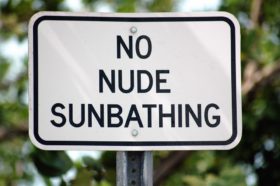
Anyway, the consequence of the SPF testing methodology means that SPF 40 may not protect you any better than SPF 15; an SPF 40 product may just allow you to get away from having to reapply sunscreen more often. In other words it just means it doesn’t wear off as quickly. Think of SPF as a overnight face mask you put on your face, that eventually over time absorbs into your skin. The more it absorbs, the less it protects you from the sun. So let’s say your SPF 15 formula is good for two and a half hours, then it all absorbs in and you have to reapply. In comparison a SPF 40 sunscreen may take six hours before it absorbs and you have to reapply. So it’s a matter of how often you have to reapply, but the overall protection is the same while each is still active. So it is possible for a lower rated SPF product to provide as much protection as a higher rated SPF product, as long as the lower rated SPF product is applied more frequently.
So what should you look for in an SPF?
SPF numbers mean nothing if you’re exercising and sweating off your sunscreen. So really, what you want is a formula that not only protects you from the sun, but doesn’t harm you when it absorbs through your skin. This is the tricky part, because usually to achieve higher SPF values requires the use of synthetic chemical active ingredients, which researchers have often found to be more harmful to your skin than the sun itself.
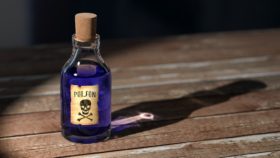
What is also important to consider, that is not commonly discussed, is how thick you put on your sunscreen. The laboratory SPF testing has a specific requirement of how much is to be put on over a specific area of skin. The labs either measure the sunscreen with a syringe, or weigh it if it’s not liquid enough for a syringe, and apply evenly to a marked area of skin. This ensures even coverage, and offers consistent results during testing. This means that you need to apply it in exactly the same way to have the same results as the lab. But the instructions on your sunscreen bottle don’t tell you to “apply x amount in grams per cm2 of your skin”, it usually just says to apply liberally, which is the requirement. So you don’t even know if you’re putting on the correct amount to have the desired SPF that was tested in the lab!
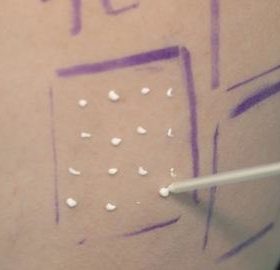
Then there are also differences in individual skin types and different activities that people do. Yes, the lamps used in the lab are intended to mimic the sun, but test subjects are screened, and only those that meet the requirements are allowed to be test subjects. Certain skin types are declined: excessive warts, moles, scars, blemishes, etc. are also declined. The subjects who do qualify are then given specific instructions of things to avoid, including photo-sensitizers and anti-inflammatory medications. But real life is different from a lab. If you’re exercising, it is likely your sunscreen won’t last as long no matter what the SPF rating. If you’re out in the sun constantly versus in the shade, your time of effectiveness will vary. If you apply a thicker amount of a cream than you would a lotion, you will have different effective time as well, and if you’re taking certain medications, you’re not going to stop for a day. There are so many variables to consider: elevation, time of year, humidity, and many many more considerations. It all varies.
So you have to remember: that SPF number, only has a meaning if you are in perfect conditions, as in the kind of conditions you find in a lab. And if the conditions are different from that, the actual SPF effect could vary dramatically, even from one product to another with the same SPF rating. Even though the SPF lab testing is designed to create an apples to apples comparison of sunscreens, when various products are used in real world conditions, the outcomes can be quite different simply because different products will react to varying conditions differently.
See where I’m going with all this? The best thing you can do to protect yourself from the sun, is limit exposure in the first place. Wear hats, long sleeves, stay in the shade. If you must be out in the sun, get a sunscreen that is not already toxic due to it containing cancer causing active ingredients or preservatives, and simply re-apply more often. Rather than looking for a higher SPF, look for sunscreens that do not contain toxic ingredients, and take your own sun protective measures as mentioned above.

What you eat makes a difference too. Here is a study showing that consumption of rosemary with citrus helps your body prevent sunburn all on it’s own: “Protective effects of citrus and rosemary extracts on UV-induced damage in skin cell model and human volunteers.” So it is possible to get additional “sunscreen” protection internally by consuming nutrients that help to protect your skin from the sun from the inside.

Sunscreen versus Sunblock?
To clarify, there are two types of sunscreens on the market, a sunscreen and a sunblock. A sunscreen basically filters the sun’s rays before they hit the skin, but still allows some through. Think of it as wearing a mesh over your skin. Sunblock actually reflects the sun’s rays before they can hit the skin; this is how zinc oxide actually works as a sunblock. Think of it as a physical shade that you wear, like being under an umbrella while out in the sun. Now, a sunblock is still not 100% protective. Here is a study that shows that being under certain shades, such as an umbrella, is not fully effective: “Sun protection by umbrellas and walls.”

Read the Label
Sun protection is important, for everyone, but whatever type of protection you decide to go with, make sure you do your homework. What you really want to do is look at what is in your sunscreen, as in, turn the tube around and read all the ingredients, active and inactive, because not all active ingredients are good for you. As noted in our article here, ingredients such as avobenzone, oxybenzone, octinoxate, octisalate, homosalate, octocrylene, and titanium dioxide are not necessarily safe for your health. And there are many inactive ingredients intended as preservatives that are added to sunscreens that have shown to cause skin problems and even cancer. You can look for some of the more common ones to avoid in our part I and part II articles on preservatives.
So read the label, and then ask yourself if you are really getting both sun protective measures, and a safe product to put on your body. Most importantly, remember, your skin does absorb some of what you put on it. We always say here at Nature’s Complement, “if you don’t want it in your body, don’t put it on your body”. Also look to see what type of additional protective measures your sunscreen offers, not just the active ingredients. For instance, we use zinc oxide in our sunscreen, which is great for blocking UV rays, and is also an approved “active” ingredient as a sunscreen according to the FDA. However we also discovered research that shows that other ingredients, such as Rosemary Essential oil, have been shown to block UVA rays. Despite the science, Rosemary is not an approved “active” sunscreen ingredient according to the FDA, so it’s not listed as such on the label, even though it has research evidence to support that it is effective.
Just because an ingredient is not on the FDA’s approved list of sunscreen active ingredients, doesn’t necessarily mean that protection is not provided by “inactive” ingredients. For example, here is a study showing “Prevention of retinal light damage by zinc oxide combined with rosemary extract.” (The FDA does not have the final say in science, only the final say in regulations.)
According to Life Extension Foundation (LEF), there are several natural compounds that can be added to sunscreen to offer additional protection for the skin, especially from skin aging due to the suns damaging rays. These compounds include green tea, rosemary, milk thistle, and turmeric. You can read their article titled “The Sunscreen Paradox Popular Misconceptions About Skin Cancer Prevention.”
Do your homework
Some natural ingredients are actually photosensitizing, meaning that they enhance the suns rays and make them more powerful, thus causing sunburn rather than providing sun protection. (Some prescription and over the counter medications are also photosensitizing, so care must be taken with these as well.) Then there are natural ingredients that have a lot of mixed information. One common ingredient that I have seen all over the Internet is carrot seed essential oil. I saw it so much actually, that I researched it initially and found scientific articles that show it provides protection from UV light. So I tried it in my original formula with terrible results. While carrot seed essential oil does offer amazing benefits to the skin, a sunscreen it is not, as evidenced by actual SPF testing. I was not shocked to find that the studies supporting it as a sunscreen were actually redacted, meaning there was apparently something wrong with the research. It is possible that carrot seed essential oil (and carrot seed oil) may even be photosensitizing, meaning it makes the sunscreen less effective. A very expensive lesson learned.
Carrot seed essential oil and carrot seed oil are not the only culprits. Many other natural ingredients are photosensitizing too, especially those that have citric properties such as lemon or orange (if used topically, as opposed to ingested). So if you’re making your own sunscreen, check the information you find very carefully. I have personally seen some dangerous advice on making your own sunscreen, including by some very popular bloggers who generally offer good information.
So you have to do a little of your own homework to decide what’s best for you. We did a ton of research for you; actually a couple years worth (part time), and that research resulted in the creation of our Shield SunScreen, which tested at an SPF of 15. Only you can decide if you like our formulation. If you prefer something that lasts longer or is water proof, then get such products. But only you can decide what your limits are regarding what chemicals you are willing to put on your body (which will eventually end up in your body). Our ingredients are as follows:
FDA approved Active Ingredient:
Zinc Oxide 20%
Additional Ingredients:
Sweet Almond Oil infused with Green Tea and Milk Thistle, Beeswax, Organic Shea Butter, Organic Jojoba Oil, Organic Coconut Oil, Natural Vitamin E Oil (non-GMO), Organic Flax Oil, Rosemary Essential Oil, Astaxanthin.
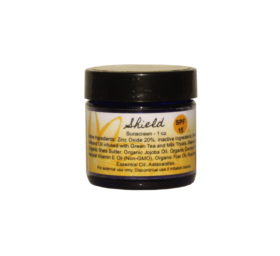
Lastly, I found this great article on the “Potential of herbs in skin protection from ultraviolet radiation.” A great lengthy read, with lots of additional resources.
For Health,
Tober
Nature's Complement is a participant in the Amazon Services LLC Associates Program, an affiliate advertising program. If you purchase products on Amazon through any of our affiliate links, we get a small percentage of the transaction, at no extra cost to you. We spend a lot of time writing the articles on this site, and all this information is provided free of charge. When you use our affiliate links, you support the writing you enjoy without necessarily buying our products. (However we would appreciate if you would do that too!) Thank you for helping to support our work, however you choose to do so.
These statements have not been evaluated by the Food and Drug Administration. This information and/or products are not intended to diagnose, treat, cure or prevent any disease.


